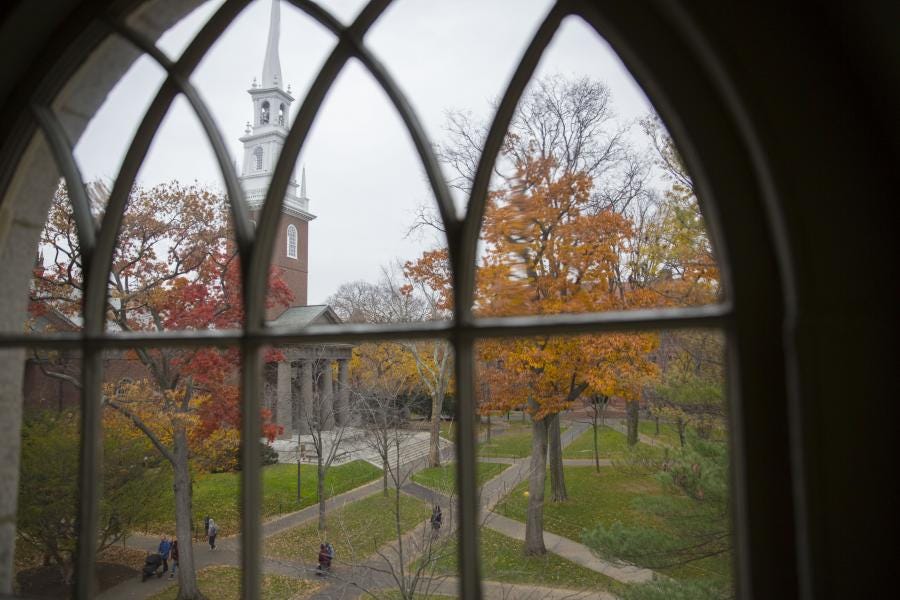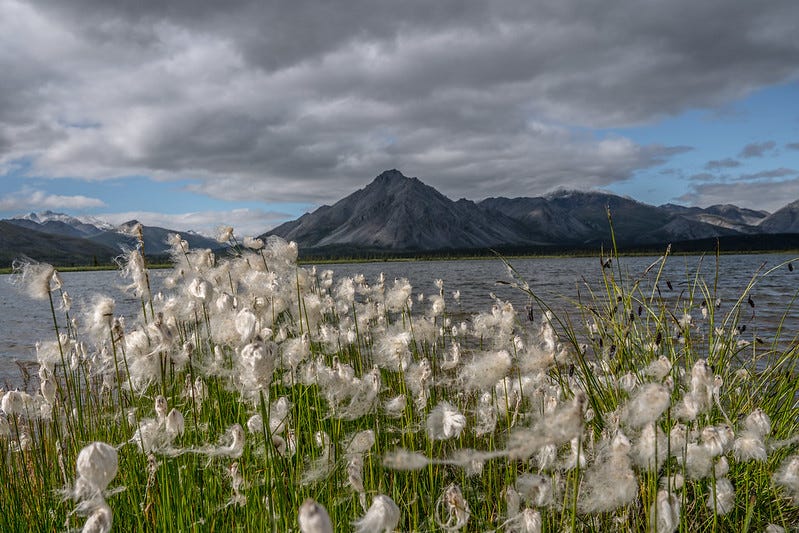Big Oil's renewable head fake; Harvard alumni climate push, and fire tornadoes
Welcome to Callaway Climate Insights. And especially to our new subscribers in these strange days. Please share this with friends and colleagues.
The lightning strike hit just as I peered out my study window to the northwest early Sunday morning, one of dozens lighting up the Bay Area in the pre-dawn darkness. This one caught, and within seconds a 50-foot tree was engulfed in flames less than a mile from my house. Sirens blared.
Like many residents in Northern California, I’d calculated what it might take for the fierce wildfires of Napa and Sonoma counties to make it down 30 miles to my neighborhood near the Golden Gate Bridge. And I’ve felt somewhat comforted by the protection surrounding water offers. But I never thought the fire could actually just ignite in my neighborhood.
Here it was though, and as I woke up my wife, grabbed my wallet, looked at my guitar, and considered how many neighbors I could wake up before the flames reached our cul-de-sac, firefighters had contained it — one of a dozen vegetation fires they successfully beat back in the area overnight. I stupidly jumped in my car to go see the action (ever the journalist) but by the time I got near, the show was over. Just me, my car, and the lightning.
As Northern California roasts in 100-degree-plus heat, rolling blackouts hit Covid-stranded homes, and wildfire season begins in earnest, it was a stark warning that climate change is not somebody else’s problem. Firenadoes, wind-storm derechos, hurricanes and flooding, or just brutal heat that kills hundreds a year. Wherever you live, it will come to you.
More insights below.
And don’t forget to contact me directly if you have suggestions or ideas at dcallaway@callawayclimateinsights.com.
Youth climate push takes aim at Harvard

. . . . Over to Harvard University, where climate is taking center stage in an election for the Board of Overseers. Two recent graduates, Nathan Goldberg Crenier and Danielle O. Strasburger, both of the ‘18 class, have launched Harvard Forward to push for climate change reform on university governance boards.
The mail-in and online alumni vote concludes today and the graduates are confidant the publicity around their campaign will help push turnout past last year’s 12.5% of 300,000 eligible alumni. They raised signatures to get five candidates on the ballot, along with the traditional eight chosen by the Alumni Association for five seats on the 30-member overseers board.
The graduates are seeking influence to try to get Harvard’s endowment fund to divest fossil fuel investments and better prioritize climate curriculum and climate research at Harvard. They said they’ve already got a Yale Forward campaign going at Yale and are working to bring it to other universities. They point to the impact student and alumni protests had in helping end Apartheid in South Africa in the ‘80s and ‘90s.
“We started thinking what can we do about these issues,” said Strasburger. “And if we can get Harvard to take action on these issues, then we can do more than we could do alone.”
I’ll relay results when we get them in the next several days, but as someone who remembers the Apartheid protests from my college days, it’s refreshing to see a group bringing the alumni to bear on climate issues.
As BP pivots on renewables, Big Oil looks the other way

. . . . BP’s pivot on renewables earlier this month, coming amid disastrous second-quarter results, was labeled somewhere between a Hail Mary and and Statue of Liberty play by investors and analysts, i.e. either a desperation change or a head fake. But at least it put something on the table. A look at renewable efforts by the other members of Big Oil showed BP has a couple of European competitors in the space, but a renewables race it is not. Exxon and Chevron, for example, have zero dollars invested in renewable energy. Compared to the amount of money still being spent on oil and gas projects, the prospects for a real pivot to clean energy seem a dry well.
A report on planned renewable investment by oil majors by Rystad Energy, forecast total renewable investments of $17.5 billion over the next five years. By contrast, the 10 oil companies included in that study are expected to spend “$166 billion on greenfield oil and gas projects during the same period.”

Above, Sheenjek River in the Arctic National Wildlife Refuge. Photo: Alexis Bonogofsky/USFWS.
. . . . In the news business, we call this part of August the silly season, where a lack of real news gives way to allow sillier stories to bubble to the surface. And President Trump’s new plans to allow drilling in the Arctic National Wildlife Refuge certainly qualifies. The plan by the Interior Department to allow exploration on 1.6 million acres has no chance of being implemented before the election. But more importantly, it comes as the world’s oil majors are starting to debate whether we even need to pull more oil out of the ground, given the price and the push to renewable energy. At this stage, drilling for oil during an oil collapse is like holding a political rally during a pandemic. . . .
. . . . Still, fossil fuel companies know exploration, so it’s little surprise that they’re excited about the potential haul in the melting arctic waterways. The opening of new shipping routes will create a geopolitical land/sea grab the likes of which we haven’t seen since World War II. And all the headaches that come with it, as we’ve seen in Mauritius this past week. . . .
. . . .Shortly after my column two weeks ago on the rally in electric vehicle stocks, shares of Nikola Corp. (NKLA) leaped after the company reported a contract to produce between 2,500 and 5,000 chassis for electric trucks for delivery sometime in early 2023.
An attentive Callaway Climate Insights reader forwarded this CNBC story, noting that the Nikola hasn’t yet built the plant in Arizona to make the products, and instead will partner with German industrial vehicle maker Iveco, which rolls up to the Agnelli family of Turin, to begin production. . . .
. . . . As California ponders whether it’s reduction in fossil fuel use has contributed to its energy shortage this week, another climate-friendly plan took shape after five auto companies finalized a deal with the state to abide by its greenhouse gas emission rules. Ford (F), Volkswagen (VLKAF), Honda (HMC), BMW and Volvo signed on this week to boost their fuel economy capabilities, ignoring attempts by President Trump to roll back auto emission standards in the state. . . .
Greensheen and the $40 trillion trade

. . . . The surge in sustainable investing assets has created as much opportunity for asset gatherers as for investors in environmental, social or governance securities. Tony Davidow breaks down the different types of “greenwashing” going on in financial services and guides financial advisers on how to spot and avoid them.
According to Pensions & Investments, there are now $40.5 trillion in sustainable assets, almost double the level of four years ago. These strategies are now available to institutions, large families and retail investors, and they are now offered in separately managed accounts, mutual funds and exchange-traded funds. The research showed that roughly 75% of the assets are actively managed, but a growing trend has been the introduction of more passive options, with 60% of new asset flows 2019.
Data driven: The rise and rise of ESG investing

Detail from Visual Capitalist: New Waves: The ESG Megatrend Meets Green Bonds
. . . . The pandemic has accelerated the momentum of sustainable investment strategies, but widespread adoption will depend on proving that socially responsible investment returns are superior over the long term. . . .
News briefs: Isaias losses top $3 bln, sustainable funds hit $1 trillion


Editor’s picks:
Insured losses from Hurricane Isaias top $3 billion
UBS: Sustainable funds hit $1 trillion
Phillips 66 to convert oil refinery to renewables plant
Latest findings: New research, studies and papers

Above, the Greenland Ice Sheet, 2018. Image: NASA/JPL-Caltech.
Greenland ice sheet passes point of no return
Nearly 40 years of satellite data from Greenland shows that glaciers on the island have shrunk so much that even if global warming were to stop today, the ice sheet would continue shrinking, scientists are warning. New research, published last week in the journal Communications Earth and Environment, signals that the snowfall that replenishes the ice sheet each year cannot keep up with the ice that is flowing into the ocean from glaciers, Laura Arenschield writes in Ohio State News.
Asset diversification versus climate action
Asset pricing and climate policy are analyzed in a global economy where consumption goods are produced by both a green and a carbon-intensive sector. The authors allow for endogenous growth and three types of damages from global warming. It is shown that, initially, the desire to diversify assets complements the attempt to mitigate economic damages from climate change. In the longer run, however, a trade-off between diversification and climate action emerges. The authors derive the optimal carbon price, the equilibrium risk-free rate, and risk premia. Climate disasters, which are more likely to occur sooner as temperature rises, significantly increase risk premia.
Authors: Christoph Hambel, Goethe University Frankfurt; Holger Kraft, Goethe University Frankfurt; and Rick van der Ploeg
CESifo working paper No. 8476. Available at SSRN.
The rising cost of climate change: evidence from the bond market
The level of the social discount rate (SDR) is a crucial factor for evaluating the costs of climate change. The authors demonstrate that the equilibrium or steady-state real interest rate is the fundamental anchor for market-based SDRs. Much recent research has pointed to a decrease in the equilibrium real interest rate since the 1990s. Using new estimates of this decline, we document a pronounced downward shift in the entire term structure of SDRs in recent decades. This lower new normal for interest rates and SDRs has substantially boosted the estimated economic loss from climate change and the social cost of carbon.
Authors: Michael Bauer, Universität Hamburg; Glenn D. Rudebusch, Federal Reserve Bank of San Francisco
Available at SSRN.


I’m glad you’re my neighbor. Thanks for the update. Love the info!